Banaras Chowk
Karachi's Beating Heart


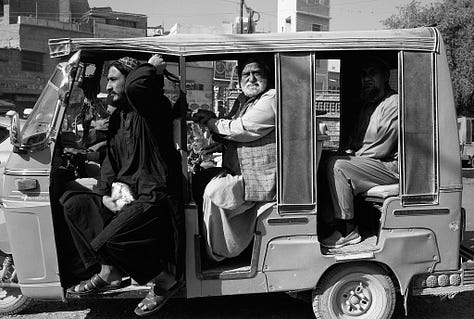

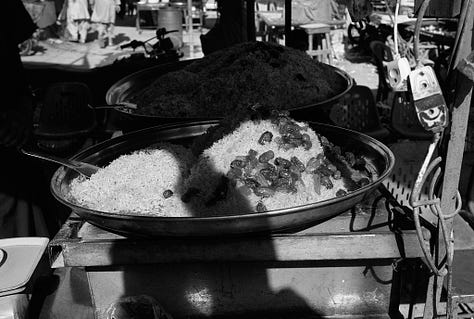
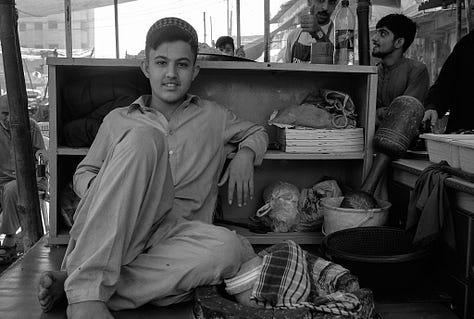
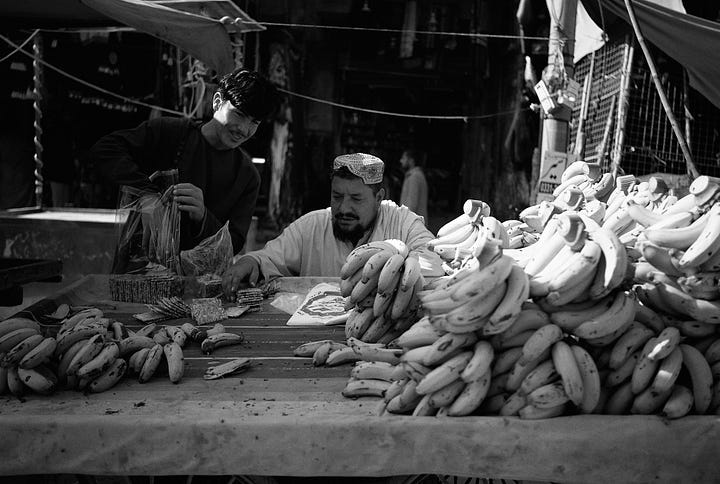

Even in daylight, the intersection refuses to reveal all its secrets. A bus idles mid-turn, men clinging to its edges like barnacles on a ship, rickshaws darting past like stray thoughts. The noise is near deafening, a symphony of horns, shouts, and engines, yet my attention is drawn to a single man standing motionless in the chaos, watching silently as if he's been waiting for me all morning.
The city's pulse beats strongest here, where every crossing is a negotiation and every face tells a story. A fruit cart spills color into the dusty street. I follow a boy's gaze, searching for what captivates him so completely. There's nothing visible, only sun, traffic, chatter. Still, the way he grips the metal pole suggests something just passed through, something unseen by most.
In the narrow alleys branching from the chowk, the air thickens with spice and memory. A woman balances a basket on her head with impossible grace, her eyes fixed forward, determined. Behind her, a mural fades on a crumbling wall: a promise of hope, or just another layer of paint in the city's palimpsest. Here, the ordinary and the extraordinary blur together until they become indistinguishable.
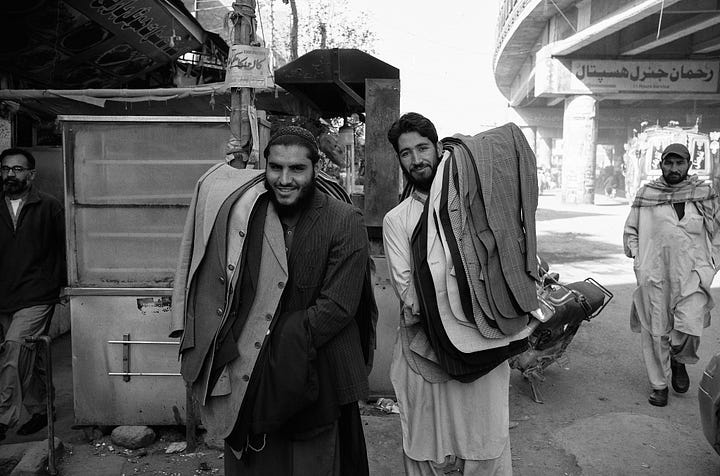


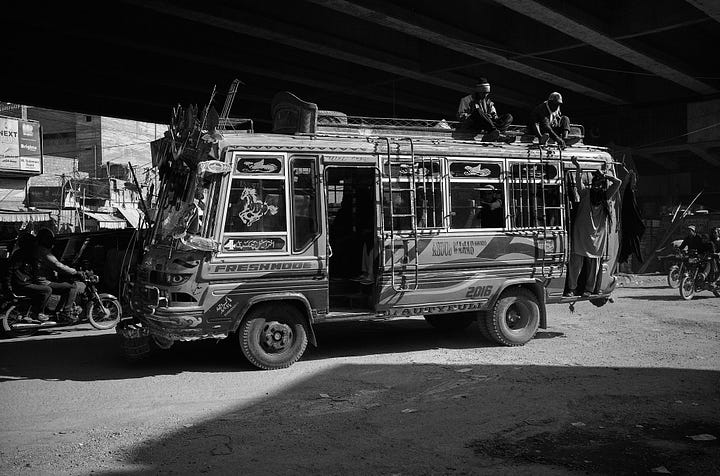
A butcher works muscle memory into meat, his hands moving with practiced precision. The blade flashes too quickly for eyes to follow. A customer waits, knowing the right cut by smell, not sight. The transaction unfolds wordlessly, ancient, ritualistic, and precise, a choreography repeated countless times in Karachi's markets since before anyone can remember.
At the bus terminal, bodies press toward vehicles that represent possibility, movement, change, escape. Yet most will return by nightfall, completing the circuit that powers the city. The terminal is a perpetual departure lounge, but also a place of inevitable return, of cycles that never quite break.
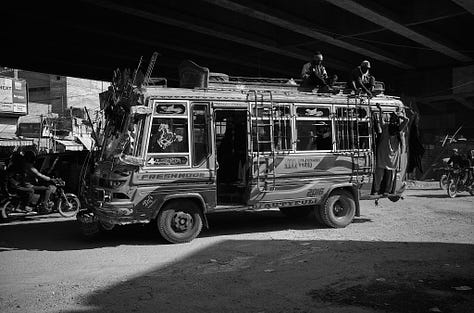



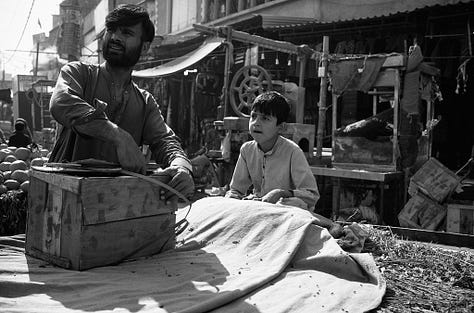
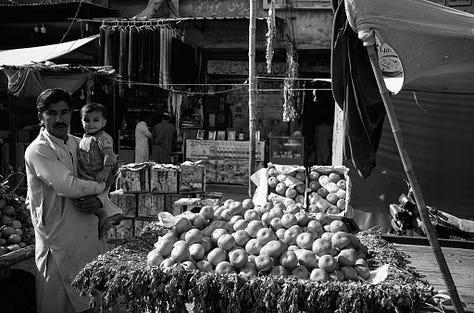
Sometimes, the city slips into another dimension. Shadows lengthen beyond their natural reach, colors shift into hues not found in nature. The bus glides through midnight fog, searching for a time it once belonged to. Figures walk alongside, their outlines trembling with memory. Here, Banaras Chowk doesn't wake, it remembers.
In these liminal moments, reality and echo intertwine. The street's clamor softens, replaced by the hum of what might have been. I move between frames: the real and the imagined, the lived and the dreamed. Each photograph becomes a doorway, each caption a whispered invitation to look again, harder, deeper.

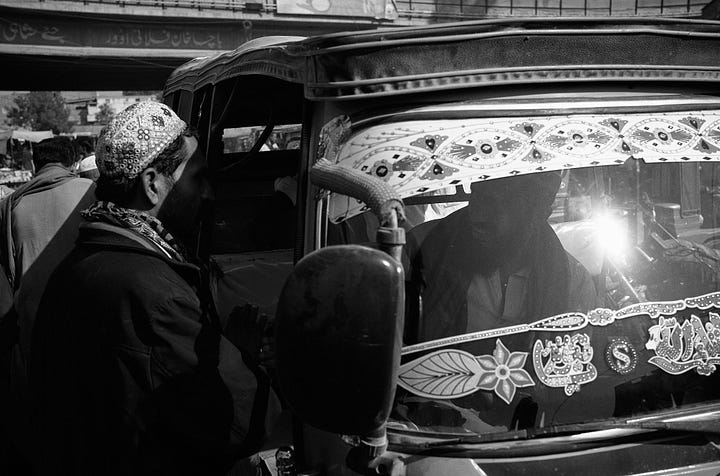
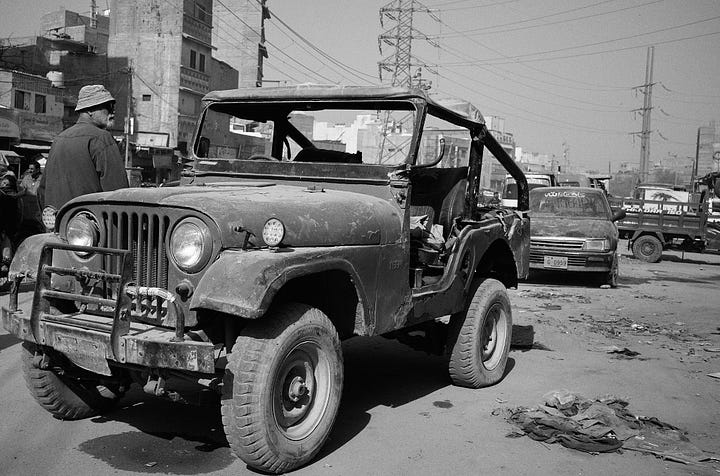
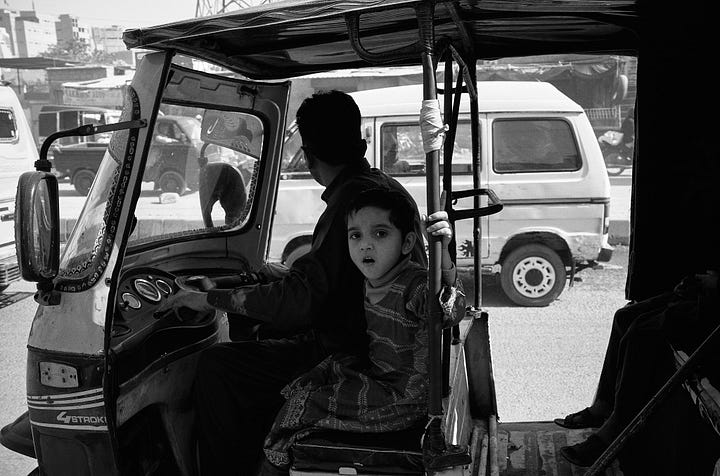
Karachi's duality is everywhere, visible in the weathered faces of its people, the layered architecture of its streets, the syncopated rhythm of its days. To walk Banaras Chowk is to inhabit both the present and all its possible pasts, to witness a city forever in flux, yet stubbornly, beautifully itself.

